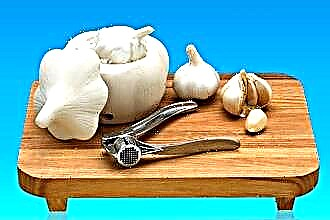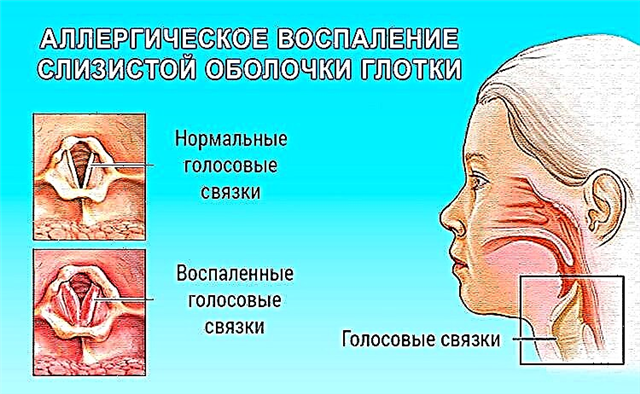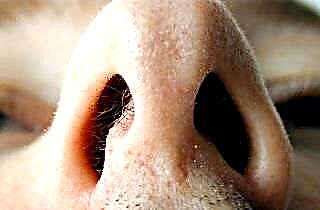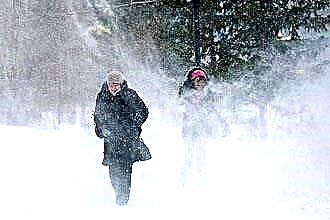The ENT organs are closely interconnected, so the inflammatory process and infection easily spread to nearby healthy structures. The first complication of rhinitis may be otitis media or pharyngitis. The nasal cavities are connected to the throat by the nasopharynx, and to the ear cavity - by the auditory tube. If the nose is stuffy in the morning, the cause should be sought among infectious pathogens, allergens and environmental factors.
 First you need to analyze:
First you need to analyze:
- How often does congestion occur?
- have you had similar symptoms before?
- how did you manage to alleviate the condition?
- was there hypothermia, contact with a sick person?
- what drugs did you take the day before, what did you eat?
Only by collecting anamnestic information can the exact cause of the disease be established and the correct treatment can be started.
Microclimate in the house
If during the day (at work, away, on the street) the nose breathes absolutely freely, and after a night's rest, nasal congestion appears, you should look for the reasons in your home. In addition to difficulty in nasal breathing, a slight itching, burning sensation in the nose may also disturb.
The listed symptoms indicate severe dryness of the air and dustiness of the room.
Normally, the nasopharyngeal purifier copes with the attack of dust, microbes and allergens. With a high concentration of harmful particles in the air, the secretion in the nasal passages becomes thicker, and the cilia become less mobile. Thus, the mucous membrane becomes unprotected and is exposed to the irritating effects of environmental factors.
As a result, it swells and disrupts air ventilation in the nasal cavities.
What can be done?
To facilitate nasal breathing, you need to take care of the microclimate in the house. Note that night rest will become much more pleasant and effective if:
- humidify the air. For this purpose, you can use special humidifiers, put a vase of water or hang damp laundry near a heat source;
- reduce the temperature to 19 degrees;
- ventilate the room. Access to fresh air makes it possible to quickly fall asleep and have a good rest;
- regularly wet cleaning. By cleaning objects in the house from dust particles, we fight irritants and prevent the occurrence of swelling of the mucous membrane.
Before going to bed, it is also recommended to cleanse the nasal passage from allergens, dust, microbes with a saline solution. They are sold in the form of drops or aerosols at the pharmacy. It is especially important to carry out a hygienic procedure after visiting places with polluted air.
The use of vasoconstrictor nasal drugs in this case is absolutely inappropriate. Medicines with such a mechanism of action, on the contrary, worsen the condition of the nasal mucosa.
Sinusitis
Another reason why it is impossible to breathe through the nose in the morning is chronic sinusitis. The fact is that when the position of the body changes, namely, lying on the sofa, the outflow of viscous secretion from the paranasal sinuses improves. The mucus seeps into the nasal cavities, thereby blocking the path for air to pass.
Already half an hour after getting up from the morning congestion, not a trace remains, since the outflow from the sinuses is again hampered. Chronic sinusitis can be unilateral or bilateral.
Causes
In the development of the disease, the leading role is played by infectious pathogens, which are in a "semi-active" state during the period of remission. Among the predisposing factors, it is worth highlighting:
- poorly performed dental procedures for caries, stomatitis;
- deformation of the septum, which complicates the outflow of mucus from the maxillary sinuses with a cold;
- untreated infectious rhinitis.
Clinical signs
An exacerbation of the disease is observed with a decrease in immune defense (colds, flu) and the negative influence of adverse factors (hypothermia).
During the period of remission, a person usually does not notice a deterioration in his general condition. Only occasionally can you notice a slight swelling of the nasal mucosa, scanty discharge and a low subfebrile condition.
As for the exacerbation, people are worried about:
 headache;
headache;- purulent discharge of a thick consistency, the volume of which increases every morning;
- nasalness;
- fever;
- soreness in the frontal, temporal, zygomatic, maxillary zone.
The general condition also changes. A person becomes irritable, lethargic, appetite decreases, sleep worsens.
Treatment rules
It is possible to achieve the desired result in treatment only by combating pathogenic microbes and ensuring the outflow of purulent secretions from their sinuses.
The key to the success of antibiotic therapy is the correct determination of the type of infectious agent.
Drug therapy includes:
- antibacterial drugs (Amoxicillin, Azithromycin). The choice of medication should be carried out taking into account the results of the antibioticogram;
- nasal aerosols with a vasoconstrictor effect. By reducing the secretion and swelling of the nasal tissues, natural drainage from the maxillary sinuses is restored. For this, Otrivin, Tizin, Xymelin are used;
- antihistamines (Diazolin, Claritin). They reduce tissue swelling and improve mucus drainage;
- herbal preparations (Sinupret). Tablet forms are prescribed for internal administration, the solution can be used for inhalation (in the absence of hyperthermia). The herbal composition of the drug provides anti-inflammatory, anti-edema effect;
- mucolytics such as Rinofluimucil. Due to the decrease in the viscosity of sputum, it accumulates in the cavities in a smaller volume;
- saline solutions (Humer) - necessary to cleanse the nasal passages from accumulations of mucus, dust, microbes.
With chronic sinusitis, physiotherapy procedures are effective:
 electrophoresis with drugs such as antibiotics;
electrophoresis with drugs such as antibiotics;- phonophoresis with hormonal agents (hydrocortisone);
- ultrasound, laser therapy.
At home, you can also use folk remedies:
- cold inhalations with onions, garlic;
- aloe juice diluted with water 1: 1 can be dripped into the nose twice a day;
- onion, garlic juice can be diluted with herbal infusions (1: 2).
To achieve the maximum therapeutic effect, before the introduction of drugs into the nasal cavities, they must be cleaned with a saline solution.
Allergy
The next reason, due to which the nose is constantly stuffed up in the morning, is an allergic reaction to a dust mite, more precisely to its waste products. Most people do not develop an immune response to contact with such a provoking factor. However, the risk group includes asthmatics and allergy sufferers. The condition usually worsens during the winter, when the room is rarely ventilated and allergens build up.
The optimal conditions for ticks are a humid, warm place, so their abundance is highest in bed linen, mattresses, pillows, carpets, upholstered furniture and toys.
If the house has high humidity and the temperature is 25 degrees, the risk of developing allergies increases many times.
Symptoms
Clinical signs of allergy appear with direct contact of the waste products of the tick and the nasopharyngeal mucosa. The disease is characterized by:
- nasal congestion in the morning;
- redness of the conjunctiva;
- lacrimation;
- itchy eyes, nose;
- swelling of the eyelids;
- frequent sneezing;
- mucous rhinorrhea;
- Difficulty nasal breathing;
- dry cough.

In severe cases, swelling of the face, neck, severe itching of the skin, wheezing over the surface of the lungs, shortness of breath and severe cough are possible. As a result, a person does not sleep well, often wakes up and breathes through his mouth.
Therapeutic directions
Medicines will help alleviate the condition:
- antihistamines for internal use (Telfast, Erius, Eden);
- antihistamine nose drops (Zyrtec, Fenistil);
- corticosteroids (Nazonex);
- nasal drops with a vasoconstrictor effect (Rinostop, Snoop).
Only an allergist can help cope with the disease. Thanks to a full examination, the specialist accurately identifies the causes of the allergy and prescribes therapy.
Hyposensitization is considered an effective method of dealing with allergies. It is based on fractional administration of an allergen to develop the body's resistance to its effects. According to a certain scheme, the dose is gradually increased, which leads to the addiction of the person to the provoking factor.
General recommendations
To reduce the concentration of allergic factors in the room, you must:
- regularly wet cleaning. Note that cleaning with a vacuum cleaner or broom will only aggravate a person's condition, since allergens that were on the surface of the carpet will randomly move in the air;
- reduce the number of soft toys, carpets, books;
- fabric upholstery of furniture should be replaced with leather;
- wash bedding often;
- change pajamas, bed linen every 3-4 days;
- ventilate the room daily;
- adjust humidity (65%) and temperature (19 degrees).
Medicines only temporarily relieve allergy symptoms. To completely cope with the disease, you need to get rid of the allergen.
Vasomotor rhinitis
When nasal breathing is not difficult during the day, and nasal congestion appears at night and in the morning, vasomotor rhinitis should be suspected. Its occurrence is due to a violation of the vascular tone, due to which the vessels of the nasopharynx are in an expanded state.
Changes in the autonomic nervous system are accompanied by dysfunction of the capillary wall, as a result of which the vessels respond inadequately to the effects of environmental factors.
Among the predisposing factors, it is worth highlighting:
- polluted environment with chemicals;
- chronic inflammatory diseases of the ENT organs;
 adenoids, deformation of the septum, narrow nasal passages, foreign bodies, polyps, which reduce their diameter and obstruct the passage of air;
adenoids, deformation of the septum, narrow nasal passages, foreign bodies, polyps, which reduce their diameter and obstruct the passage of air;- long-term use of drugs that affect vascular tone (antidepressants, antihypertensive, hormonal, vasoconstrictor drugs);
- alcohol abuse;
- hormonal changes in adolescence, menopause, pregnancy and diseases of the endocrine system;
- frequent stress;
- vegetative-vascular dystonia and other diseases of the nervous, cardiovascular system.
Clinical picture
Symptomatically, the pathology is not very different from other forms of rhinitis. The vasomotor type is characterized by:
- difficulty breathing through the nose. Often people notice that one nostril is blocked;
- mucous discharge;
- nasalness;
- sneezing;
- deterioration of the general condition.
Treatment
Therapy involves the appointment:
- hormonal agents;
- vasoconstrictor drugs;
- saline solutions;
- medicines that improve microcirculation;
- herbal remedies.
Physiotherapy is also recommended. If conservative therapy is ineffective, the dilated vessels are removed.
A serious complication of nasal congestion is prolonged apnea, when a person stops breathing for a while. The consequences of hypoxia can be irreversible, so do not postpone your visit to the doctor for a long time.

 headache;
headache; electrophoresis with drugs such as antibiotics;
electrophoresis with drugs such as antibiotics; adenoids, deformation of the septum, narrow nasal passages, foreign bodies, polyps, which reduce their diameter and obstruct the passage of air;
adenoids, deformation of the septum, narrow nasal passages, foreign bodies, polyps, which reduce their diameter and obstruct the passage of air;

